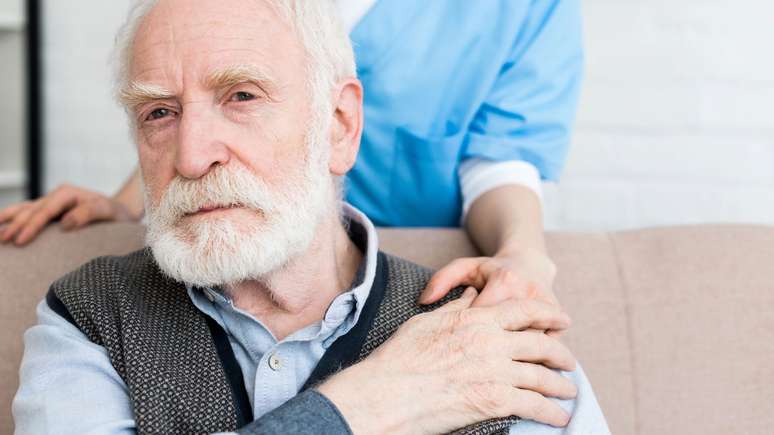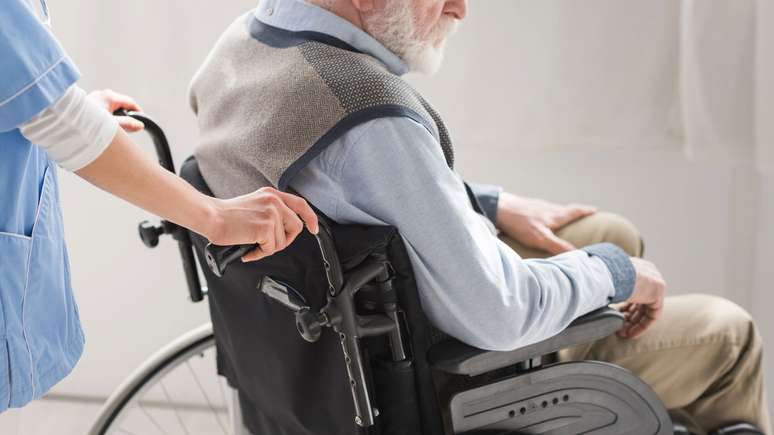The teleassistance resource represents an important advance in the concept of assistance, going beyond simple surveillance to promote quality of life and prevent risks for the elderly.
Teleassistance has played a fundamental role in the remote monitoring of the elderly, ensuring greater safety and autonomy for those who wish to stay at home. This service, expanding thanks to technological advances in recent decades, connects seniors to 24-hour call centers, enabling rapid responses in emergency situations and more effective monitoring of their well-being. Therefore, as the Brazilian and global population ages, the importance of solutions that offer continuous and efficient support grows.
In the current context, many families are looking for alternatives to guarantee care without giving up the comfort of home. Teleassistance, integrating technology, specialized professionals and efficient communication, transforms the routine of those who find themselves facing motor limitations or more delicate health conditions. This resource represents an important advance in the concept of care, going beyond simple surveillance to promote quality of life and risk prevention.
How does teleassistance for the elderly work?
So-called teleassistance uses electronic devices, such as bracelets, emergency buttons and sensors installed in homes, which allow immediate contact with a trained team. When a need arises, be it a fall, an illness or any atypical situation, elderly people turn to the service, which quickly identifies the accident and calls family members or emergency services, depending on the severity. The objective is to provide agility in service and minimize the possible consequences of domestic accidents.
This system, unlike complex medical technologies, does not require major adaptations, working intuitively and integrated into the routine. In addition to emergencies, there are devices capable of monitoring health parameters, such as blood pressure and heart rate, automatically informing the center when any data deviates from the usual standard. Therefore, monitoring is carried out discreetly, respecting the privacy of the individual.
What are the main advantages of teleassistance in remote assistance?
The use of telecare offers several advantages for remote care of the elderly, making it a valuable tool, especially for those who live alone. Among the main advantages the following stand out:
- Rescue agility: Minimizes response times in emergency situations, reducing health risks.
- Greater independence: It allows seniors to stay active at home, with a constant feeling of protection.
- Peace of mind for family members: Family members are assured that there will be immediate support if needed, reducing anxiety and stress.
- Constant monitoring: Continuously collected data helps to detect changes in health early.
- Injury prevention: The presence of sensors helps identify and reduce situations prone to falls or other domestic accidents.
Investments in telehealth are seen as a viable alternative to reduce unnecessary hospital admissions and promote more active and healthy ageing.
What precautions are essential when implementing telehealth?
Before implementing telehealth, a few steps are essential to ensure its effectiveness and safety. Firstly, the choice of equipment must consider ease of use and adaptation to the profile of the elderly person, taking into account physical and cognitive limitations. The correct installation of the devices, as well as the training of the elderly and their families, are crucial points to guarantee confidence and good assimilation of the new technological routine.
Another important aspect concerns the training of the remote assistance team, which must be ready to deal with various requests, from activating help to offering emotional support in crisis situations. Furthermore, the confidentiality of the information collected during monitoring must be ensured, in compliance with current legislation on the protection of personal data.

How does telehealth contribute to active ageing?
By promoting safety and ongoing support, telecare encourages the autonomy of older adults, contributing to active aging. This concept values the maintenance of daily activities, social participation and the prevention of conditions that could compromise the quality of life. With adequate remote supervision it is possible to encourage healthy habits, quickly identify changes in health status and reduce the fear of accidents, essential factors for elderly people to remain integrated into their community.
The progress of telehealth solutions in Brazil and other countries continues to follow demographic evolution. The trend is that, in the coming years, new technologies will make remote monitoring even more intuitive and accessible, contributing to more humanized and efficient care.
Source: Terra
Ben Stock is a lifestyle journalist and author at Gossipify. He writes about topics such as health, wellness, travel, food and home decor. He provides practical advice and inspiration to improve well-being, keeps readers up to date with latest lifestyle news and trends, known for his engaging writing style, in-depth analysis and unique perspectives.








